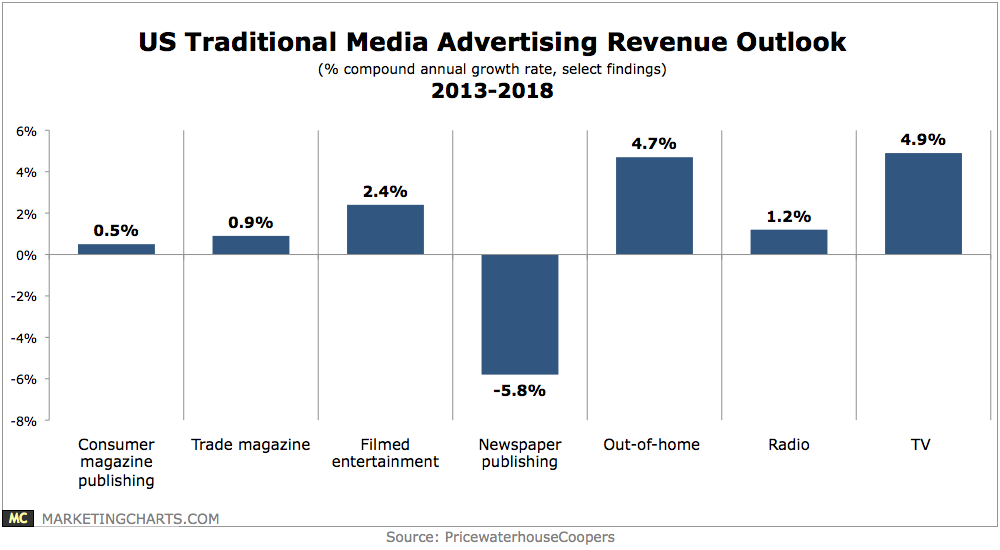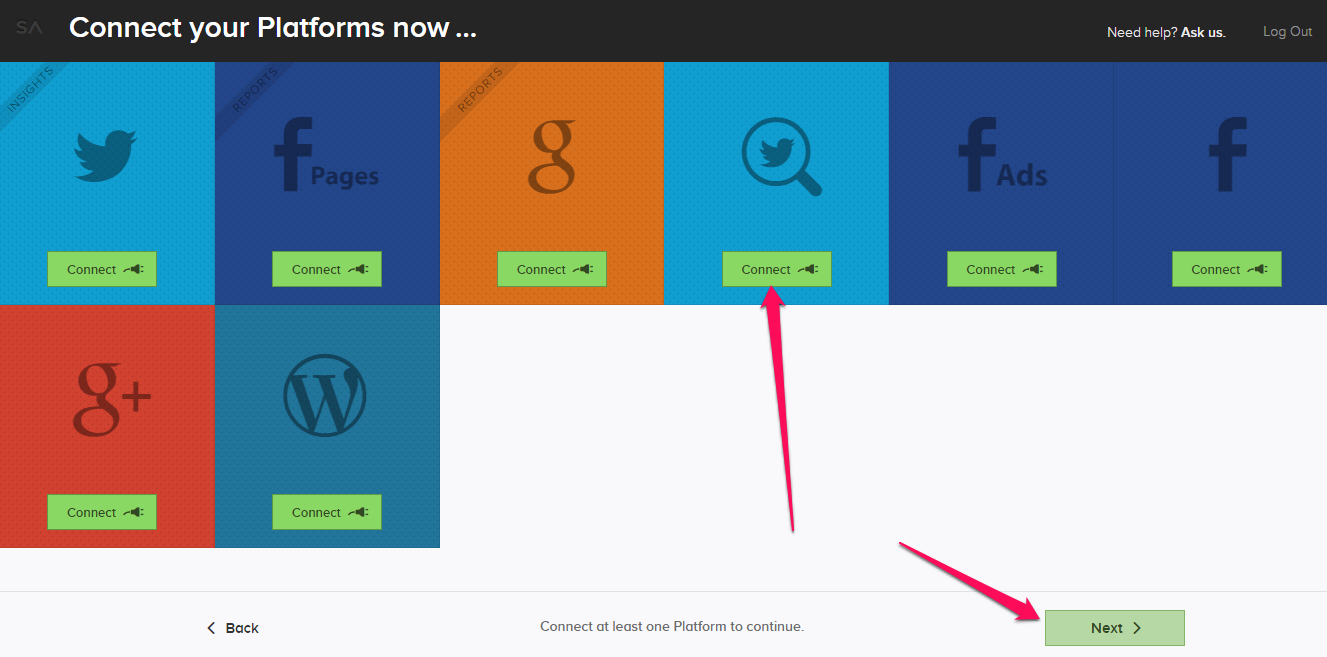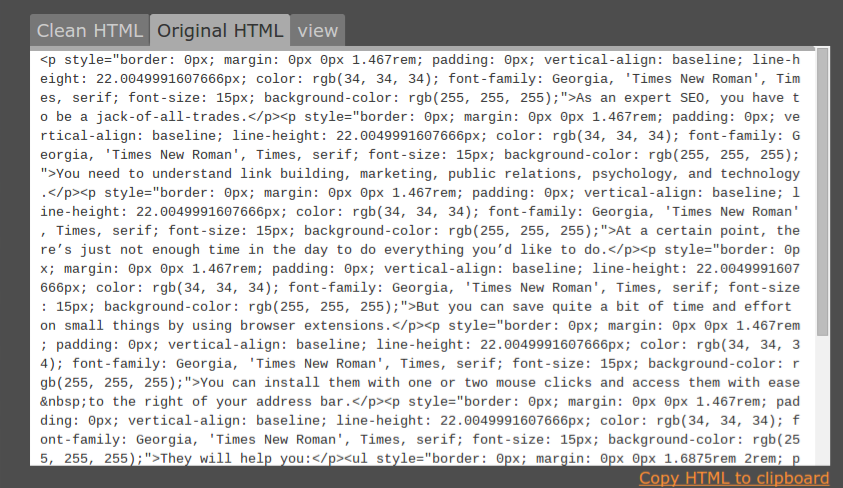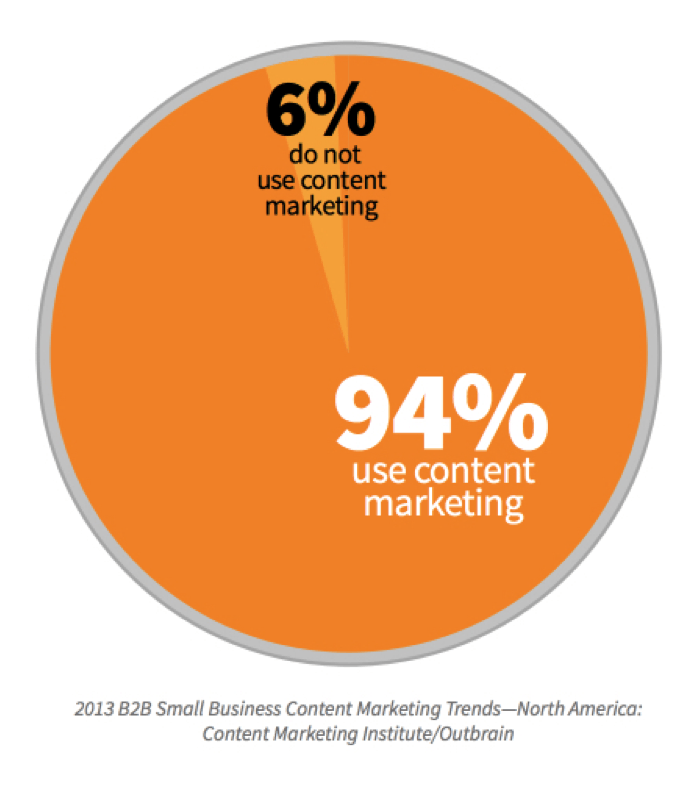If you want to grow your blog traffic, you have to fully embrace content marketing. You can achieve tremendous success in your business if you leverage the tools, native apps, and software available online to enhance your user experience.
When it comes to apps, the monthly usage of apps and mobile web is amazing.
You can use apps for great content creation, to automate content distribution for your blog posts, implement your editorial calendar, improve your site speed and make content marketing a lot of fun (and profitable).
Smart marketers have reported that many native apps collect more accurate “intent,” that is, data from visitors—feeding better personalization features for content creation. If you want your audience to appreciate your well-researched types of content, you have to use apps.
In this age of stiff competition, good content will no longer suffice. Your content has to be above average, because your target audience knows better now. They’re desperately searching for great content that will solve their problems.
With content marketing apps, you can brand your content marketing plan to suit your target audience. Traditional advertising is giving way to content marketing efforts—so the earlier you get serious about it, the better the results that you’ll get for your small business.
A research study by BitQuirky found that 72% of digital marketers say that branded content is more effective when it comes to building brand awareness than magazine advertisements.
Tumblr and WPP recently conducted an exclusive survey to define what readers are looking for on social networks. Surprisingly, what they are looking for is great content.
Each of the app developers that came up with the ideas you’ll read about next wanted to take your simple content and boost its perceived value. After all, you can’t say that your content is high quality until the readers say so or they benefit from it and want to share it across their social media platforms.
Let these nine content creation and marketing apps reshape your vision, guide you on the right path and revamp your content into great content that drives traffic and leads:
1. Buffer
If you want to become a productive blogger or a blog post machine, a result-getting online marketer and a content marketing expert, then you need to hit the app store and find Buffer.
Social network marketing is a must for every content creation marketer, because your customers and clients are on Facebook, Twitter, LinkedIn, etc. According to Social Media Examiner, 83% of marketers say that social media is important for their business, and 59% of marketers are using social networking for six hours or more each week.
“What if scheduling a tweet could be as easy as sending it now?”
Those were the words of Joel Gascoigne, app developer, co-founder and CEO at Buffer, when he got fed up in October 2010 and began dabbling with a few social media marketing tools to help him schedule his tweets.
Back in 2010, there were not many social media tools that could schedule blog posts, tweets and updates while giving the mobile user control. It was a heck of a lot of work. But, that was the beginning of a great journey for this visionary entrepreneur.
Chances are, you’re on Twitter. You keep your Twitter account updated on a regular basis. But, I’m guessing that you don’t want to stay awake until midnight, just to post to Twitter because you found that your followers are usually logged on at that time, you need a better marketing tactic that will help.
If you want to schedule posts to your Twitter account anytime and anywhere, you need to hit the app store and get Buffer.
Some call it the social network assistant, while other people prefer to call it the social network robot. According to AppStorm, “Buffer is the best social networking tool today.” No matter what you call it, Buffer will help you upgrade your social media experience.
Buffer is a Twitter native app and management tool that allows you to add Tweets to be sent on a schedule. You can work it into your editorial calendar and sit back without a worry, knowing that your scheduled tweets will hit the web.
The beauty of Buffer is that you can manage multiple Twitter, Facebook, and LinkedIn accounts from your dashboard. This is particular useful when you want to post an update or new content (video, podcast, blog posts, etc.) to your fans on these social networks at one time.
In your Buffer dashboard, you can connect several Twitter, Facebook (page or profile) and LinkedIn accounts with up to ten updates. You can also now share, schedule and manage the performance of your pins on Pinterest.
The native app Buffer is free to use. The free account is ideal for beginners to social media marketing or advanced marketers who just want to have a taste of what Buffer can offer. If you want to manage up to twelve social profiles, you’ll have to pay $10 per month. This will, in turn, give you unlimited posts in your scheduler.
If you’re a B2B company, or your B2C company works with a team, you can add two team members to help manage your Buffer account. When there is so much to accomplish in a day, you can’t afford to do it all alone.
Once synced, this is how to add updates to your Buffer account from your Twitter account:
From Facebook, it’s a lot easier:
Buffer gives you total control from the dashboard and social media profiles. For example, when using the Twitter retweet button, Buffer will also appear as an option and you’ll see it within the Twitter retweet button dialogue screen, too:
Note: Using powerful social media tools such as Buffer and Hootsuite can help you improve your social reach, marketing efforts, grow your brand awareness and increase your credibility online. But, these tools don’t take the place of building relationships and answering questions that will naturally improve user experience.
Buffer will not respond to the questions of your followers, though it can be helpful in scheduling and auto-posting the updates. So, while I encourage you to use these tools, focus on building relationships manually with responsive web practice—that’s the true definition of a solid content marketing plan.
2. Pocket
When you find something you want to read or watch later, save it to Pocket and view it on any device, any time. I’ll tell you more about the app store gem known as Pocket in a moment, but first let’s see what reading can do for you as a content marketer.
Reading is the only cure for ignorance. According to Read Faster, “It is estimated that the cost of illiteracy to business and the taxpayer is $20 billion per year.”
If you want to always create high-quality content and have innovative ideas for your content creation and marketing effort, then you have to read aggressively.
Reading can make you a better writer, says Mary Jaksch.
Have you read a book (or e-book) in the past twelve months? Pew Internet statistics revealed that almost half of all readers under thirty read an e-book in 2014.
“Read it later” reinvents itself. Pocket is similar to Readability, an app that enables you to save web pages for later reading. The app developers knew that small business owners wouldn’t have the time to always read there and then so they created a feature to enhance the user experience.
You can view files later on iPhones, iPads, PCs and any mobile device. Both are highly recommended native apps that let you shelve items to read and watch when the time is right.
In 2012, Save to Pocket was one of the top share buttons, generating over 1,000,000 saves and used by over 10,000 developers.
This “read later” app is widely used by authors, book lovers, marketers and researchers. If you want to make a mark in today’s competitive age, you’ve got to read widely and effectively so you can generate ideas for your editorial calendar and blog posts. But, the Internet as we know it today is so distracting.
Often, you have plans to read a particular book or blog post, or to watch a video that will benefit you, but social media activities, such as responding to push notifications, Tweets, Facebook comments, chatting with friends and clients and the like might take away your attention.
A lot of things can steal your focus while online. Cat videos, recipes, interesting blog posts and the latest news are some of the things that you have to be decisive about (do I read it? Do I skip it? Do I read it later?) when you stumble on them.
When you’re not consistently productive on your important tasks, you’ll inevitably end up procrastinating. As a result, you can’t get closer to your goals and you miss opportunities to grow your brand awareness.
Sure, you can deal with the constant disturbances by blocking them out with applications that curb procrastination, such as Cold Turkey. If your attention span is easily shaken, then I suggest you visit the app store and snatch it up.
Better yet, save all of that interesting or distracting content so that you can enjoy it later. This will give you a calm mind as you go about your daily activities, because you’re doing what is important for your small business.
Reading is the benchmark of leadership. You can dissolve writer’s block through reading extensively. Whether or not the book or material is relevant to your industry or marketing effort, you have to open your mind to new information. Every bit of information is an inspiration to a writer.
How do you save to Pocket?
Follow these simple steps:
i) Sign up for free: On the homepage, click the “create an account” button, follow the simple instructions and you’re done.
ii) Save web pages: Once you’ve signed up for Pocket, you’ll be able to download an extension for your browser. Now, you’re ready to save your favorite web pages for later reading. When you’re on the page that you want to save, click the Pocket logo and the “save” button.
If your web page was successfully saved, here’s what you’ll see:
Remember that you can also add “Read it later” to your WordPress posts. This way, readers can save to read later, instead of bookmarking the web page and never getting to it again.
3. Sumall
It’s time to turn data into insights with Sumall. Sumall is an all-in-one social media and ecommerce dashboard. If you’re looking for tools that will make you the best social manager, ecommerce marketer, CMO and/or digital marketer, this free software app can help you.
You can have fun doing content marketing if you have the right tools. You may not have the budget to assemble a top-tier team that will constantly monitor your progress, but you can leverage tools.
Being able to measure everything is the next phase of digital marketing. According to Vincent Mifsud, Chief Executive Officer of ScribbleLive, it’s becoming very hard to connect with your audience through traditional methods of advertising.
“People are connecting with your brand through different models, primarily on social networks.” A research study by PricewaterhouseCoopers projected that in 2013 through 2018, the annual revenue for newspaper publishing will continue to drop, but online publishing will boom.
There are important metrics such as analytics, reports, insights and more that you need on a daily basis to effectively deploy your content strategy, generate qualified leads and grow your revenue, but, without the right tool, it’d be difficult to manually extract these all-important metrics.
When it comes to getting the best results out of your content marketing campaigns, what you need more than anything is to document your strategy.
According to Content Marketing Institute, 43% of B2C marketers
with a documented strategy considered themselves effective, vs. 33% of B2C marketers who fail to document their strategy.
App developers designed Sumall to document your content marketing strategy while also getting insights and data about your target audience that will enable you grow your business.
Here are the simple steps on how to use the app:
Step one: Join for free. On the homepage, input your email address and password. Then, click the green “GET STARTED FREE” button.
Next, fill in your first and last name. Then select the time zone that is relevant to you. Click the green “GET STARTED” button again:
Step two: Select the platforms you use. Remember that Sumall is an all-in-one app for managing your social media and ecommerce accounts. Once you’ve signed up, the next step is to select the platforms you use frequently (e.g., Facebook, Twitter, Google+, Shopify). Just click on the platform and it’ll be checked. Then, click “Next.”
Next, connect your platforms. Just click the “connect” button and you’ll be redirected to the site for each platform.
Once you’ve connected all of your social media and ecommerce platforms, that’s all you have to do. The next time you log back into your account, you’ll see analytics, charts, data, and insights about your campaigns and how to improve on them. Imagine how useful this is going to be for your editorial calendar.
Imagine what you can achieve when you have all the viable customer insights and data that you need to make SMART decisions. With the native app Sumall, the reports from all of your campaigns across different social media sites are delivered to you on a platter.
When you’re armed with customer insights such as the long-tail keywords that customers are searching with, the user intent and the social engagements, you can easily optimize and increase your blog organic traffic.
4. Google Docs Research Tool
Google has a built-in research tool for Google docs users. With this simple native app, you can conduct research directly from your document environment without visiting the search engine, which saves time.
To become a productive blogger and curate a ton of blog posts, you can’t afford to waste your time on research, because there is a list of many other things that you must do. Getting things done on time is the hallmark of great bloggers and app developers realized this.
Research is the ultimate task for every content marketer. If you want to grow your blog traffic, creating content that is backed up by data is one way to stand out and prove that you’re an expert.
You can increase the perceived value of your content by linking out to authoritative sites. When that happens, your audience will benefit from your content and share it on their social media platforms—because useful content is shared more than anything else.
The challenge is this: getting actionable data that is accurate can be somewhat difficult for most people. You can read books or take a case study from another firm.
But, the easiest way to find data, relevant information and scholarly or expert opinions on your subject matter is to use the search engines.
With the Google Docs research tool, you don’t have to leave or use search engines separately. You can access the search engines directly from your account and carry out your research quickly.
Follow these simple steps:
Step one: Log into your Google Docs account (all you need is a Gmail account). Once you’re logged in, open one of your documents (e.g., an article). Then, go the Tools menu > Research.
Click the Research tab. A panel will open on the right side of the page. Start a search by typing into the search bar.
Let’s assume that you’re writing an article about “growing B2B sales.” In order to find data, expert content or case studies to back up your article, just plug the keyword into the search box. It’ll look like this:
If you were doing research in Google’s search engine, you’d have to open the web page, then copy the link from the browser. Using the Google Docs research tool, you just have to hover on the search result of your choice and click “insert link.”
5. Word2CleanHTML
I create an immense amount of content.
Blogging consistently can generate up to 126% more leads and 434% more inbound links than companies that don’t blog. This was/is my driving force each time I write a blog post. It may not bring results today, but it’ll pay off in the future. It also boosts brand awareness.
My goal has always been to write more content for my blogs. I also wish that I could write more guest blog posts, because that is one of the easiest ways to generate fresh traffic and qualified leads, but time is short.
So, what I usually do to maximize my time is to use tools, such as Word2CleanHTML, to clean up my article.
Often, I write articles using Microsoft Word or Google Docs. These two text editors are user-friendly, but they also have their downsides.
For example, when you copy the article/post from these text editors and paste into WordPress, there can be broken links, unwanted spaces or annoying special characters you never bargained for, and more.
Then, you’ve got to spend time to sort out these errors. But, time is precious and you don’t want to waste any of it—not even a few minutes, because they add up to a few hours over the course of a year. The app developer who crafted Word2CleanHTML obviously knew this and wanted to lend a helping hand.
Word2CleanHTML can make your content writing and formatting easier. It’s a simple tool that converts your Word or Google Docs text into clean HTML that’s ready for WordPress. I suggest hitting the app store and getting it.
To show you how this simple tool works, I pasted a small text section of my older post (not created in WordPress) into the tool. Then I clicked the “convert” button.
If I decide to paste a blog post that I wrote in MS Word into WordPress, this is what it would look like:
Honestly, this looks ugly.
Now, take a look at the code generated by the tool:
The post is ready to go. You can now select all of the code and copy, or just click the “Copy HTML to clipboard” below and copy the code to WordPress. Click publish and you’re done. This saves you time and helps you format your blog posts for easy reading.
6. Hemingway App
If you’re looking for a tool that can highlight common errors in weak writing, then you need the Hemingway App.
This basic editing app not only identifies problems in your writing, but it also groups them into different categories so you know exactly what needs to be fixed and how to do it. The categories are:
Hard sentences: If any section of your sentence or paragraph is hard to read, it’ll be highlighted, so that you can edit it.
Very hard sentences: Hard to read sentences shouldn’t be in your writing because readers will find it difficult to understand your message. Eliminate “very hard sentences” makes it easier for your readers to understand your post.
Phrase: The purpose of writing is to communicate ideas and thoughts using familiar words. When you use jargon or uncommon words that readers aren’t used to, you defeat the purpose of your writing.
The Hemingway App gives you an alternative word or phrase. For instance, in place of “utilize,” you can substitute “use.”
Adverbs: An adverb modifies a verb, adjective, or another adverb. Too many adverbs in your writing make your content and blog posts weak, and people will be lost while reading them. Avoid words such as hopefully, intentionally, obviously, etc. If you can, remove adverbs from your writing altogether.
Passive voice: The editor also highlights phrases or sentences written in passive voice. Passive voice has some negative effects for writers. For example, it increases wordiness and removes the active voice of a narrative. If you have to write in passive voice, don’t overdo it. Aim for two or fewer instances.
So, instead of using “the name of the man’s wife is Janet,” which is the correct expression, you should use “the man’s wife is named Janet” or “the man’s wife is Janet.” These three sentences convey the same meaning, but the styles are quite different.
Passive voice:
the name of the man’s wife is Janet
Active voice:
the man’s wife is Janet
Hemingway App editor may not grow your blog’s traffic directly, but by formatting and creating content the user wants, you’ll increase your search and social media traffic.
Let’s see the native app in action.
I just pasted two paragraphs from an older blog post. Let’s look at the grading and how it can be improved.
As you can see from the screenshot above, the grading is 8. The lower the grading, the better. The goal of this content marketing program is to lower your grade to 6 or 7. That way, you’ll be assured that your content is easy to read. When you write as simply as possible, you’ll reach a wider audience and build a successful content marketing campaign. Looking at the screenshot, you can see that some of my sentences are “very hard to read.”
Since these sentences are so hard to read, all I have to do is edit the sentence structure and make it shorter. When I do that, the highlight will be removed, and my grading will reduce drastically.
A readability grade of 6 is great. Of course, you can lower it further, but it’s better than 8 or 9. Just by restructuring the sentences and shortening them, I improved the content’s readability.
App developers realized that not everyone creating content was a seasoned editor or copy editor. Those who aren’t can grab Hemingway App from the app store and use it to identify common grammar errors and make them better.
To save time, you can paste your entire article into the editor. Or, you can start with the introduction first, tweak it and make it better, then move on to the next paragraph.
If you continually use this tool in your content creation, you’ll become very good at writing, editing and formatting content for your target audience. It’ll become second nature and then you’ll no longer need this tool.
7. Skitch
When it comes to driving traffic to your blog, you have to be strategic with the types of content that you create. Ninety-four percent of B2B marketers use content marketing to drive leads and increase sales. But, that content has to be well-written and deliver immense value to readers.
If content marketing (primarily blogging) helps 94% of marketers to grow their business, why do we still have bloggers who struggle to get 100 visitors per month and are broke as a result despite having a ton of blog posts?
The reason isn’t all that hard to understand. It’s because all blog posts are not created equal. The majority of marketers out there are now investing heavily in creating more in-depth content. According to Curata, 71% of marketers will spend more money on content marketing this year.
If you desperately want to increase user engagement, drive qualified customers and generate more social shares, do your best to switch your content strategy to the data-driven blog post.
In other words, create blog posts, articles and other types of content that are backed up by data, case studies, screenshots, research works and customer insights (from surveys or polls).
An app developer wanted to prove that a data-driven content approach works. RummyCircle conducted a time series experiment to automate the document uploading system. They helped to increase KYC verified players by 1200% and it keeps increasing.
I don’t write any blog post without capturing screenshots that will explain the points that I’m making. I see a lot of blog posts that would have been made better if only the author captured a few screenshots and annotated on them. Take a look at one of my recent posts:
So, how do you capture screenshots of a website, chart, or data?
Go to the app store and get “Skitch.”
Skitch is one of the popular Evernote Apps. It’s easy to learn and very useful. If you’ve been reading my posts, then you have seen Skitch at work:
All of those red or pink arrows, annotations, horizontal and vertical lines, circles and more are being created by the native app Skitch.
Skitch is free, and you can download its Evernote dedicated page:
Whether you’re writing a case study or sharing a personal experiment that you carried out in your business, you need to capture screenshots. You need data and you have to annotate on your graphics with Skitch or Evernote’s web clipper.
Through a data-driven approach, Kohl’s, a department store, used an indoor positioning system that “walks the aisles” with their customers.
This strategy is powered by mobile technology and allows shoppers to subscribe for promotions the moment they enter the store. While shoppers are still in the store and throughout their visits, customers receive real-time lifestyle content based on the products they’re searching for, a truly innovative idea for improving brand awareness.
For example, if a customer has subscribed to receive information via the Kohl’s mobile app and they’re lingering in the home goods aisle, Kohl’s knows that sending relevant content to this perceived customer will help increase the likelihood that they will make a purchase.
Rust-Oleum, a company that manufactures protective paints for homes and offices, also proved how blending content, integrated media partnerships and data-driven marketing can ignite consumer motivation. By using data to make smarter decisions, Rust-Oleum got a one million person interest-based retargeting pool, three million project engagements and they took unit sales to +40% YOY.
8. ThingLink
Are you creating interactive content yet?
According to DesignHill, 70% of marketers say interactive content is effective at engaging visitors/buyers and improving brand awareness. And, 88% of marketers say interactive content is effective at differentiating their brand.
Apps are one of the interactive content forms that you can use to engage your customers. Mobile or desktop apps receive staggering engagements in today’s market. Take a look at the millions of downloads that apps generated:
If you’re only creating blog posts, then sooner or later you’re going to lose some of your blog visitors. When it comes to growing your blog’s traffic, you have to think outside the box. You’ve got to follow proven trends and create content that your users will not find elsewhere.
Most of the time, the difference between two objects is the dimensions. For example 2D objects are flat, while 3D graphics show the depth, height and width of an object and thus, the perceived quality and value is increased.
In the same vein, creating interactive content is one way to differentiate your content from the mills out there. When you write blog posts, don’t stop there. Create interactive content such as a Slideshare presentation and embed it into your post.
Some of the interactive content that you can create today includes:
- Interactive infographics
- Quizzes and tests
- Polls and surveys
- Assessments
- Calculators
- Interactive white papers
- Galleries
Smart marketers use blogging to generate leads. But, they don’t just create blog posts. They embed interactive content into those posts. That’s the reason why blogging and case studies that communicate with potential customers are the best content marketing tactics for acquiring leads and increasing revenue.
If you’re ready to improve user engagement with interactive types of content, then you need a tool that will enable you to create them.
ThingLink is an application that allows you to create a specific type of interactive content: clickable images. This is much more than putting a link in a picture, the app developers went further by having an app that puts multiple links, images and more interactive elements in it.
Here’s an example of an image that VerticalResponse created using ThingLink:
ThingLink will add more entertainment to your graphics, images and blog content. It’s important that you learn how to create interactive content with this tool, so that you can take your blog posts to the next level.
To see the interactive nature of the image, click the link below:
https://www.thinglink.com/scene/622209039320743937
9. Canva
I like to call this the “canvas of graphics.” If you’re not familiar with the native app Canva, it’s a tool that bloggers who aren’t professional designers can use easily. If you struggle with the design side of blogging, then get to the app store and find it.
It allows you to design custom images that look awesome. And you only have to spend few minutes to get it done, compared to alternative graphic design software that has a steep learning curve.
You need Canva because your users are human beings. And, as such, they’re visual beings. Their deepest desire is to learn new things through images. The human brain processes graphic information 60,000 faster than plain text and 90% of the information that is transmitted to the brain is visual. Canva app developers wanted to take this research and deliver it to bloggers in a useful way.
That’s why using interactive content is a sure way to connect and establish a deep rapport with your target readers. With Canva, you’re not restricted on the size of your image.
With your custom canvas, you can add texts, shapes, icons, pictures, etc. It only takes a click of the button and your professional looking image is ready for your blog or content campaign. If you want to edit any image or text, just click on it:
To add images or shapes to your canvas (the white space for designing your work), you can use the search engine that’s built in. Once you find the shape that you’re looking for, click on it to add it to your Canva.
To get the best out of Canva, you should learn how to design custom images for your blog posts. By the time you’ve mastered the tools and best practices, you should be able to create an attractive image like this one from Pat Flynn:
The earlier that you start using visual assets to communicate and convey your message, the better for your brand. In fact, using custom images can improve your blog’s traffic. According to Canva Design School, articles that use one image for every 75–100 words get shared the most.
The immense power of images can’t be overemphasized. When you start using Canva to create custom images, you’ll see an improvement in your Twitter and Facebook shares.
When Buzzsumo looked at 100 million Facebook posts over the last 3 months, they found that those without an image generated an average of 164 interactions (shares, likes, comments), while those with the right image had an average of 375 average interactions. Images work.
Conclusion
Growing your blog’s traffic always sounds more important than improving conversion rate. But, which is better? To get more traffic or optimize your existing traffic?
I’m confident that if you use any of these nine essential content marketing apps, you’ll open up a new channel for generating quality visitors to your blog. But, as they arrive, make up your mind to convert them into ardent blog readers and customers.
Of course, you can’t achieve any significant result in your online business without the right content. There is no shortcut or alternative to creating content.
As a blogger and content marketer, even though you decide to use Google AdWords PPC or Facebook Ads PPC to grow your audience, you’ll still require high quality content to nurture the same audience.
So what do you do? The best approach is to use these apps and tools to get customer insights and then create the content that will answer their questions. That’s how to succeed at content marketing—especially when there is so much competition against you.
Which of these tools and apps have you found helpful for growing your blog’s traffic?






















































Comments (145)